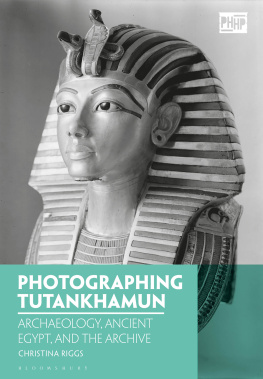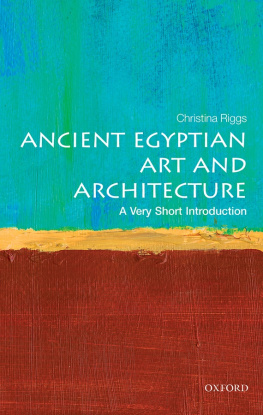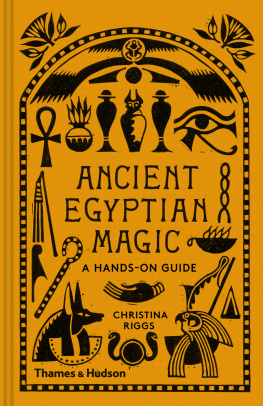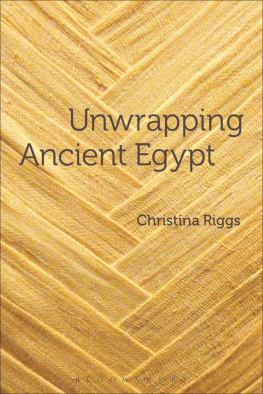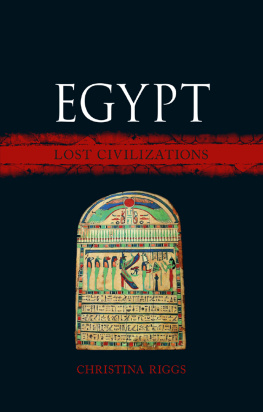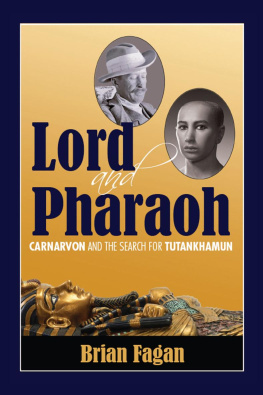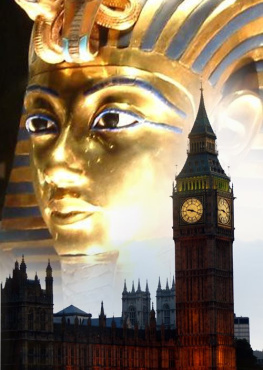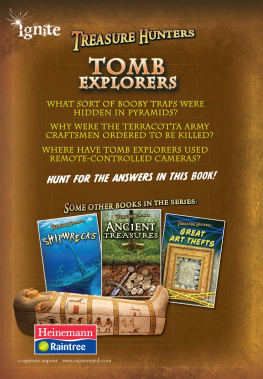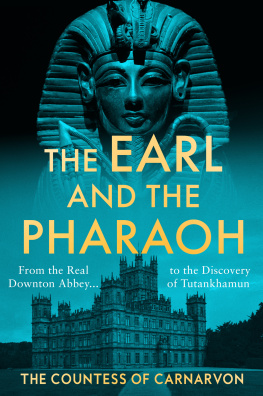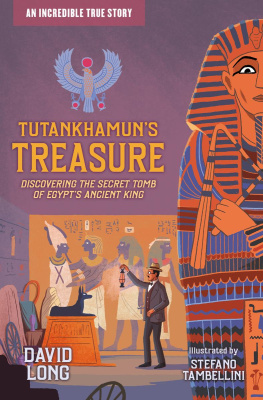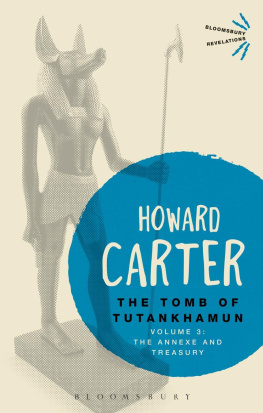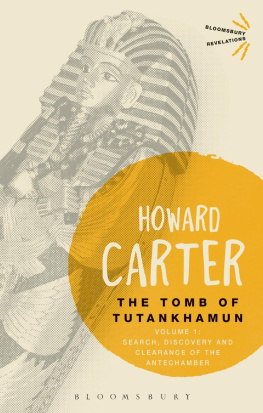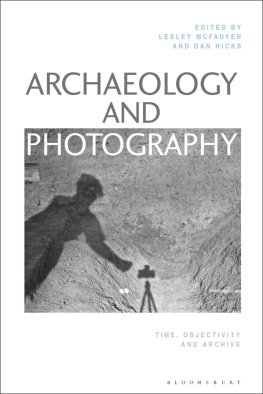
PHOTOGRAPHING TUTANKHAMUN
To my mother, Shirley Ellen Riggs, who took me to the library and let me read the big books, and in memory of my father, John Milton Riggs, Sr., whom we all still miss. Dad was the family photographer, film maker, and slide show maestro. The man behind the camera, and thus an absence in many images but a presence in our archive nonetheless.
PHOTOGRAPHY, HISTORY: HISTORY, PHOTOGRAPHY
Series Editors: Elizabeth Edwards, Jennifer Tucker, Patricia Hayes
ISSN: 23983892
This field-defining series explores the inseparable relationship between photography and history. Bringing together perspectives from a broad disciplinary base, it investigates what wider histories of, for example, wars, social movements, regionality, or nationhood look like when photography and its social and cultural force are brought into the centre of analysis.
Photography, Humanitarianism, Empire, Jane Lydon
Victorian Photography, Literature, and the Invention of Modern Memory: Already the Past, Jennifer Green-Lewis
Public Images, Ryan Linkof
Photographing Tutankhamun, Christina Riggs
Photography and the Making of Eastern Europe: Conflicting Identities, Culture Heritage (18591945), Ewa Manikowska
Photography and the Cultural History of the Postwar European City, Tom Allbeson
Photography and Bearing Witness in the Balkan Conflict, 19882015, Paul Lowe
German Vernacular Photographic Heritage of the Great War, Mike Robinson
Camera Time, Lucie Ryzova

CONTENTS
Cover The mummy mask of Tutankhamun. Photograph by Harry Burton, late December 1925; GI neg. P0753. Copyright the Griffith Institute, University of Oxford.
Howard Carter crouched before the open shrine doors in the burial chamber of Tutankhamuns tomb. Photograph by Harry Burton, 3 January 1924; GI neg. P0626. Copyright the Griffith Institute, University of Oxford.
The antechamber of Tutankhamuns tomb, looking towards the blocked, seal-stamped entrance to the burial chamber. Photograph by Harry Burton, 23 December 1923; GI neg. P0007. Copyright the Griffith Institute, University of Oxford.
Limestone flake with a drawing of a cockerel. Photograph probably by Howard Carter, 1920 or 1921; GI neg. Pkv49 (XLIX), glass 8 10.5 cm. Copyright the Griffith Institute, University of Oxford.
Twisted scarf with rings wrapped inside it (object 44b). Photograph by Harry Burton, early 1923; GI neg. P0220, glass 12 16 cm. Copyright the Griffith Institute, University of Oxford.
Rings found inside the twisted scarf seen in Figure 1.4 (objects 44ch, 44j). Photograph by Harry Burton, early 1923; GI neg. P0222, glass 12 16 cm. Copyright the Griffith Institute, University of Oxford.
Group photograph ahead of the unwrapping of Tutankhamuns mummy. Photograph by Harry Burton, 11 November 1925; GI neg. P1559, 12 16 cm film copy negative, of a print of unknown date. Copyright the Griffith Institute, University of Oxford.
The second shrine from the Burial Chamber (object 237), re-erected in the Egyptian Antiquities Museum, Cairo. Photograph by Harry Burton, November or December 1932; GI neg. P0632A. Copyright the Griffith Institute, University of Oxford.
Corner of the quartzite sarcophagus in the tomb of Tutankhamun (object 240). Photograph by Harry Burton, January 1933; GI neg. P0646H. Copyright the Griffith Institute, University of Oxford.
Tutankhamun Albums, page 702, mounted with the print Burton sent to the Metropolitan Museum of Art in 1933 as a replacement for lost negative TAA 412. Courtesy of the Department of Egyptian Art, Metropolitan Museum of Art.
A page from one of the photograph albums Burton made for Howard Carter, around 1924: Carter Album 4, page 39, in a section headed Vases alabaster. Copyright the Griffith Institute, University of Oxford (TAA i.6.04.39).
First page of Penelope Foxs guide to the Tutankhamun photographic archive, comparing prints and negatives in the Griffith Institute and the Metropolitan Museum of Art; dated 6 February 1952. Copyright the Griffith Institute, University of Oxford (GI/Green, page 37).
Seal impressions covering the first doorway of the tomb. Photograph by Howard Carter, 25 November 1922; GI neg. P0274, glass 8 10.5 cm. Copyright the Griffith Institute, University of Oxford.
The seal impressions from the first doorway of the tomb, now catalogued as object 4. Photograph by Harry Burton, on or around 18 December 1922; GI neg. P0277, glass 12 16 cm. Copyright the Griffith Institute, University of Oxford.
First page of the working register of objects for the tomb, showing numbers 1 to 22. Carter archive, Notebook 13. Copyright the Griffith Institute, University of Oxford (TAA i.2.13.01).
Print from GI neg. P0278 marked-up in Carters hand, from the card catalogue record for object 4 the sealings from the first blocked doorway of the tomb. Copyright the Griffith Institute, University of Oxford (TAA i.004.p0278).
Dismantled chariots and other objects in the Antechamber, with number cards in place. Photograph by Harry Burton, January 1923; GI neg. P0035. Copyright the Griffith Institute, University of Oxford.
Perfume vase (object 210). Photograph by Harry Burton, December 1923 or January 1924; MMA neg. TAA 1054. Copyright the Metropolitan Museum of Art.
Perfume vase (object 210) photographed again in early 1925, using a new, curved backdrop. Photograph by Harry Burton, February or March 1925; GI neg. P0524. Copyright the Griffith Institute, University of Oxford.
Gilded wooden statuette of the goddess Sekhmet (object 300a). Photograph by Harry Burton, March 1927; GI neg. P1040. Copyright the Griffith Institute, University of Oxford.
Three shabti kiosks from the Treasury (objects 318, 322 and 325). Photograph by Harry Burton, October or November 1927; GI neg. P1046. Copyright the Griffith Institute, University of Oxford.
Shabti-figures from kiosk 319. Photograph by Harry Burton, October or November 1927; GI neg. P1042. Copyright the Griffith Institute, University of Oxford.
Catalogue card for shabti-figures from kiosk 319, using prints from two separate negatives (GI negs. 1042 and 1045) and with notes in Howard Carters hand. Copyright the Griffith Institute, University of Oxford (TAA i.1.319ag).
Shabti-figure 318a photographed on frosted glass. Photograph by Harry Burton, October or November 1927; GI neg. P1056. Copyright the Griffith Institute, University of Oxford.
Shabti-figure 318a photographed upright in front of the curved backdrop. Photograph by Harry Burton, October or November 1927; GI neg. P1057. Copyright the Griffith Institute, University of Oxford.
The axles from two chariots, objects 120a and 122a. Photograph by Harry Burton, December 1923; GI neg. P0530. Copyright the Griffith Institute, University of Oxford.
The body of object 120, a gilded wooden chariot. Photograph by Harry Burton, December 1923; GI neg. P0520. Copyright the Griffith Institute, University of Oxford.
Detail of the relief frieze on chariot 120. Photograph by Harry Burton, December 1923; GI neg. P0524. Copyright the Griffith Institute, University of Oxford.
The head of the protective god Bes at the bottom edge of chariot 120. Photograph by Harry Burton, December 1923; GI neg. P0529, glass 12 16 cm. Copyright the Griffith Institute, University of Oxford.
Next page
